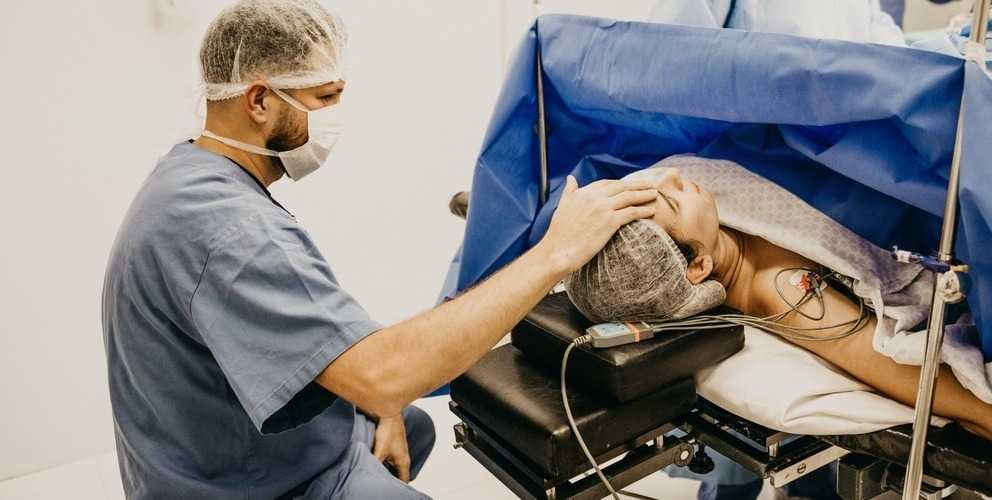
Maze Surgery: Applicable Populations, Risk Factors, Surgical Procedures and Postoperative Recovery
What is maze surgery?
The name of Maze surgery comes from its surgical principle. It uses electric cautery, freezing or scalpel cutting to create “scar tissue” on the myocardium. The scars look like the middle of the maze. The walls of the road are therefore called maze surgery.
Who needs maze surgery?
Why deliberately create scars on the heart? In fact, the main applicable group of maze surgery is patients with atrial fibrillation.
Atrial fibrillation is a form of arrhythmia. When the heart’s electrical signals are disrupted or blocked, the regular heart beat will become abnormal.
Since scars are non-conductive, doctors can use maze surgery to stop abnormal current signal transmission and return the heart rhythm to normal.
Atrial fibrillation drug treatment is preferred
As mentioned earlier, patients with atrial fibrillation are the main candidates for maze surgery, but generally speaking, atrial fibrillation will be treated with drugs first, such as:
- Rate control drugs:
such as beta-blockers (β-blockers) and calcium channel blockers (CCB). The heartbeat should be controlled below 100 to reduce myocardial lesions caused by tachycardia. - Rhythm control drugs:
Class III and Class IC antiarrhythmic drugs, such as Amiodarone (Class III) and Propafenone (Class IC), may restore atrial fibrillation to normal beating. This treatment is called pharmaceutical cardioversion. - Anticoagulants:
such as traditional warfarin or new non-vitamin K antagonist oral anticoagulants (Non-vitamin K oral anticoagulants, NOAC). The two major complications of atrial fibrillation include heart failure and stroke. Due to the irregular fibrillation of the patient’s left atrium, the blood flow is not smooth and blood clots are easily formed. Once the blood clots fall off, they will enter the blood circulation and spread throughout the body. If they hit the brain, they will form a stroke. Physicians can use the CHA2DS2-VAS2C score to assess the risk of stroke caused by atrial fibrillation. If the score is equal to or greater than 2 points, anticoagulants should be taken.
It is worth mentioning that aspirin can generally be used to prevent strokes caused by thrombus, but it is ineffective in preventing embolus strokes caused by atrial fibrillation.

Surgical treatment options for atrial fibrillation
Direct current cardiac rectification or surgery to treat atrial fibrillation will only be considered if the effect of drug treatment is not good, if there are side effects from using such drugs, or if there is an emergency. For example:
- Synchronized DC electrical cardioversion:
Electric shocks the heart from outside the body to reset the heart rhythm and return to normal heartbeat. The principle is the same as an automated external defibrillator (AED), but the current used is weaker. - Ablation:
Since atrial fibrillation is often caused by multiple sources with no fixed points, it is necessary to use the assistance of 3D stereopositioning of the cardiac catheter to find out the source and path, and then perform ablation surgery. For example:
- Radiofrequency ablation: If the source of atrial fibrillation is not in the pulmonary veins of the left atrium, radiofrequency ablation is needed to burn away the source of the arrhythmia point by point, but this method is more time-consuming.
- Cryoablation: The sources of atrial fibrillation are mostly the four pulmonary vein openings in the left atrium and the superior vena cava opening in the right atrium. Using a cryoballoon to support the pulmonary veins can perform cryoablation in one go, significantly shortening the operation time and improving the success rate.
- Radiofrequency ablation: If the source of atrial fibrillation is not in the pulmonary veins of the left atrium, radiofrequency ablation is needed to burn away the source of the arrhythmia point by point, but this method is more time-consuming.
- Maze surgery:
Because this method requires open heart surgery, maze surgery can be performed. Therefore, this method is generally used when atrial fibrillation is combined with cardiac surgery.
When patients with atrial fibrillation undergo coronary artery bypass surgery or valve repair surgery at the same time, maze surgery will be performed using scalpel incision, electrocautery, or freezing at the same time as the open heart surgery. In addition, under certain circumstances, cardiac catheter left atrial appendage occlusion (Left atrial appendage occlusion) may be used to completely seal the thrombus in the left atrial appendage to prevent the patient from having a stroke.
Risks of maze surgery
The potential risks of maze surgery are similar to other surgeries that use a cardiopulmonary bypass machine (Heart-lung bypass machine, or artificial heart-lung machine). Before surgery, please be sure to understand the surgical precautions, potential risks, and complications.
If in doubt, please consult your physician for more information. The following are potential complications and side effects of maze surgery.
- bleeding
- Infect
- Stroke
- Pneumonia
- Myocardial infarction (also known as heart attack)
- Other arrhythmia problems occur
- Requires a pacemaker (Pacemaker)
- The probability of death is about 2%
Preoperative instructions for maze surgery
Preoperative preparation begins several weeks before surgery. Your doctor will ask you to stop taking certain medications, such as aspirin or other blood thinners, stop smoking, and do a blood test to make sure you don’t have an infection.
Since some people may experience nausea and vomiting after anesthesia, be sure to fast before surgery to ensure that the stomach is empty.
In addition, you may also undergo the following tests to evaluate your physical condition:
- Electrocardiography (referred to as ECG, EKG)
- Chest X-ray
- Echocardiography

How is the maze surgery performed?
Generally speaking, the maze surgery cuts the patient’s chest and performs it as an open-heart surgery. The patient will receive general anesthesia and be connected to an artificial heart-lung machine for extracorporeal circulation, and the surgery will be performed with the heart stopped.
The doctor will cut open the patient’s sternum and make an incision in the chest. After opening the incision with an instrument, the doctor will cut the pericardium to enter the atrium. Then, he will use electrocautery, cryotherapy or a traditional scalpel to build scar tissue in the myocardium to allow the heart’s current flow. The signal can return to its normal conduction path.
After completion, wait until the heart resumes beating, and then remove the artificial heart-lung machine. The total surgery took approximately 3 hours.
During the maze surgery, doctors will also perform surgeries related to coronary arteries and valves. In addition, some patients may need to install a pacemaker.
One of the criticisms of maze surgery is that it is risky and causes large wounds. However, minimally invasive surgery is now very advanced. If a robotic arm is used to assist in maze surgery, the time and risk of maze surgery can be reduced.
Postoperative recovery after maze surgery
After surgery, patients may need to stay in the hospital for 5 to 7 days to observe the body’s recovery and take diuretics and anticoagulants to improve postoperative edema and blood clots.
The expected recovery time for maze surgery is approximately 2 to 6 months. During this recovery period, patients may feel chest pain and feel particularly tired, but they can usually return to normal life and work in 3 months, at the latest There will be no relevant postoperative symptoms within half a year.












